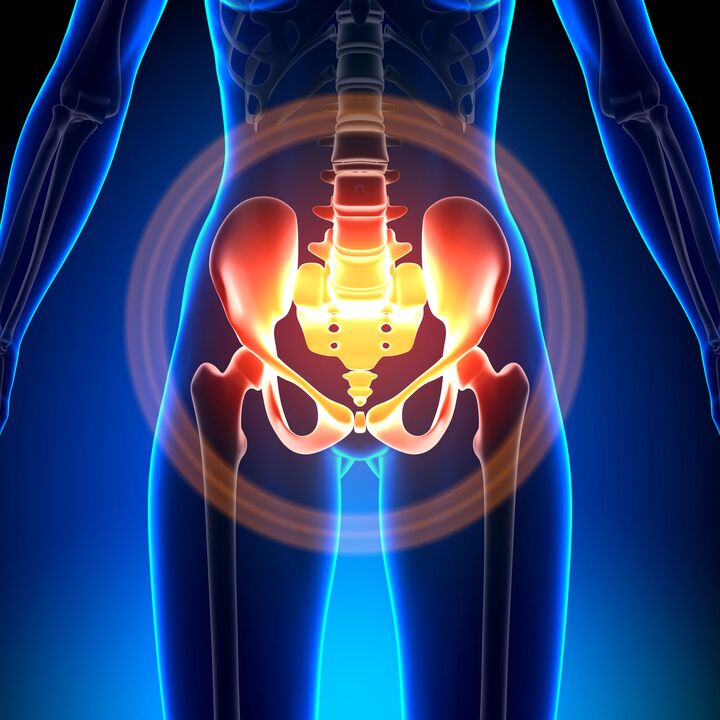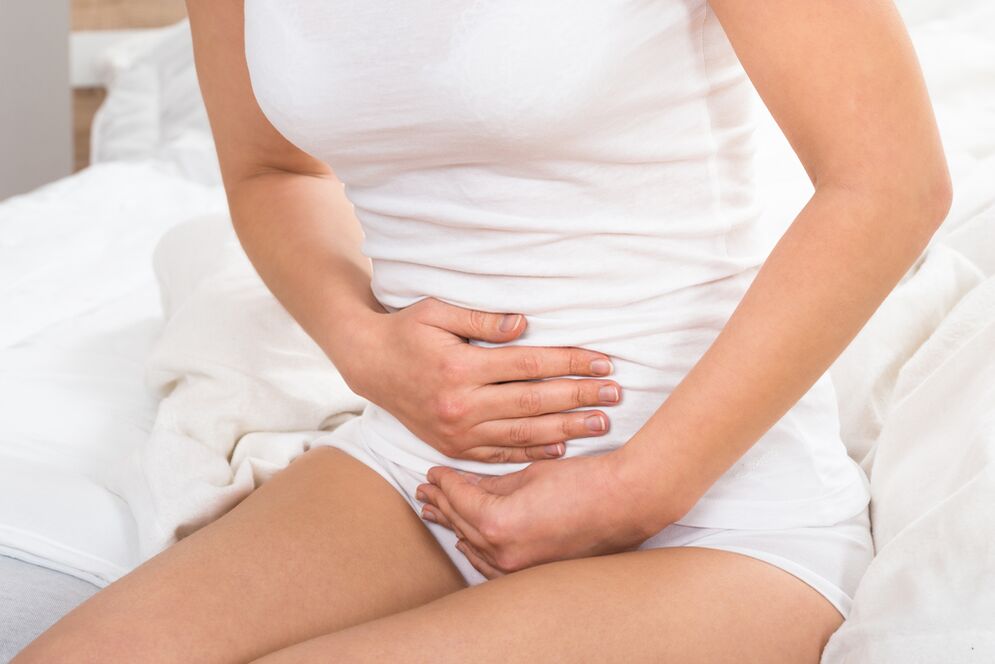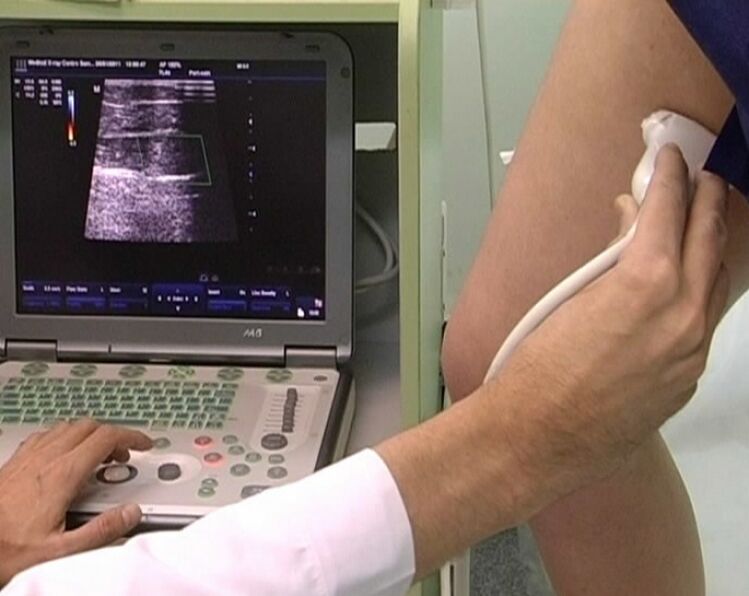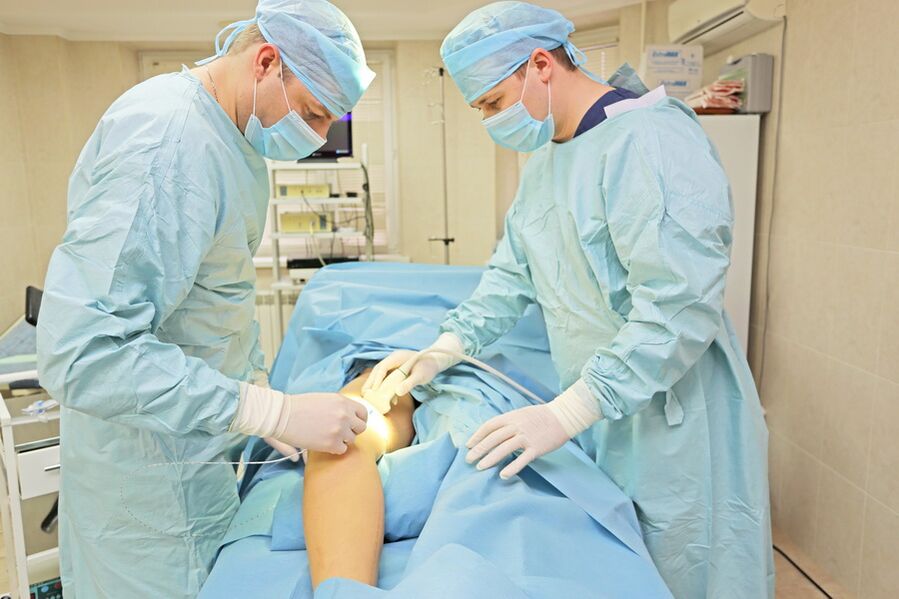
Varicose veins of the pelvis in women (ectasia, parameters, dilatation or phlebostasis) are triggered by this condition due to the return flow of blood through the ovarian artery, which occurs due to vascular compression.
The intensification of the development of the disease is pregnancy.
The internal varicose veins of the small pelvis are expressed by intense and prolonged pain in the lower abdomen.
In the literature, varicose veins of the pelvis are also referred to as "pelvic venous congestion syndrome", "varicocele in women", "chronic pelvic pain syndrome".
In the majority of cases (80%) varicose transformation affects the ovarian veins and is extremely rare (1%) in the veins of the broad ligament of the uterus.
According to modern medical approaches, the treatment of VVMT should be performed not so much from the point of view of gynecology, but first of all from the point of view of phlebology.
The causes of pathology
The most common ectasia of the pelvic veins is determined in women. In addition, as a rule, this disease in gynecology is diagnosed in patients aged 20-40 years.
Often, patients with varicose veins of the pelvis first try to carry out treatment at home. Folk methods used without the advice and recommendations of a doctor can lead to negative side effects, so after a while you should go to a phlebologist for a consultation.
The main factors that lead to the appearance of this pathology include:
- Excessive physical activity.
- Passive lifestyle.
- Congenital diseases of the walls of blood vessels - weight loss, plasticity, underdevelopment.
- Inflammatory processes in the pelvic organs.
- Hormonal imbalance.
Pathology of the sexual plan - anorgasmia, pain and discomfort during intercourse, which have a psychological etiology of occurrence, while very often practice interrupted sexual intercourse.

At the same time, varicose veins of the pelvis, treatment and symptoms of this disease are similar to varicose veins of the legs. In this situation, the valves in the veins begin to disrupt the work of the valves, which help the flow of blood to the heart muscle.
Dysfunction of the valves occurs, which act as protection against reverse blood flow.
If their work is disrupted, then blood stagnation begins in the veins. The veins, filled with blood, increase in volume, which further increases the phenomenon of stagnation.
Pelvic venous congestion usually occurs near the vulva, fallopian tubes, uterine area, and may even dilate the veins in the vagina.
First signs and symptoms
A number of major clinical symptoms indicate the development of varicose veins. The most important of the signs of this disease is unreasonable pain in the lower abdomen, pelvic area, often beginning to radiate to the perineum or lumbar region. The patient is also irritated by the abundant secretion of mucus from the vagina, especially in the middle of the menstrual cycle.
In addition to the main symptoms, there are other very important symptoms of varicose veins:

- In certain cases, infertility is observed in women.
- dysmenorrhea. Manifestation of pain during menstruation.
- Noticeable transition of premenstrual symptoms.
- Irradiation of pain in the groin, lower back and sacrum.
- Symptom of dyspareunia (manifestation of a feeling of discomfort in the vagina or vulva, both during sexual intercourse and after its completion).
- Manifestation of a painful crisis (as a result of severe hypothermia of the body, excessive physical fatigue, psycho-emotional stress).
- The appearance of abdominal pain after prolonged overload (dynamic or static).
Faced with these clinical symptoms, it is necessary to consult a doctor as soon as possible, as this pathology can have a large number of unpleasant complications:
- varicose veins may be a contraindication to natural childbirth;
- the work of the reproductive organs is disturbed;
- there is a fear of sexual contact;
- irritability and anxiety appear.
It should also be noted that all the above symptoms can be expressed in different ways, in some patients all the signs of the disease are noted, and in some only a few of them.
Methods for diagnosing the disease
In order to establish the correct diagnosis, the patient must undergo a thorough examination. If a woman complains of pain that occurs for an unknown reason, then the specialist first determines all the causes that are factors in the manifestation of the pain symptom. The patient's lower limbs are carefully examined. So you can identify the manifestation of varicose veins. In some situations, the diagnosis is made by a vascular doctor.

The main diagnostic methods are as follows:
- Ultrasound of the venous system. The examination makes it possible to examine the curvature and varicose veins.
- laparoscopy. Identify varicose veins in the ovarian area.
- CT. This makes it possible to rule out the disease, to identify varicose veins in the ovaries and uterus, to see the magnification of the monitor, as well as their curvature.
- Selective ovarikography. The most accurate review. It is performed by injecting a contrast agent into the subclavian and femoral veins.
- Doppler ultrasound. Determines in the veins of the ovaries and uterus reduction of systolic rate of the process.
The use of these methods allows for a clearer definition of the symptoms of the disease.
Degrees and differential approach
To standardize the diagnosis and the possibility of an approach to differential treatment, A. E. Volkov divided varicose veins, taking into account the location of venous ectasia and the size of varicose veins.
Three stages of this disease are classified:
- the first stage - movement "corkscrew" of the vessel, the size of the vein is not more than 6 mm;
- the second stage - the size of the vein is not more than 7-11 mm during the general type of varicose veins, VR of the veins of the arcuate uterine plexus, VR of the parametric veins, loose ectasia of the ovarian plexus;
- the third stage - the size of the vein is more than 11 mm during the main form of parametric formation or total type VR.
Given the severity of the pathological process, you can use medical methods of treatment or surgery.
Methods of treating varicose veins
Conservative methods of treatment (therapeutic gymnastics, NPS drugs, venotonics) are most often used during stage 1-2 varicose veins.

Conservative therapy during venous congestion syndrome is symptomatic, which includes normalization of rest and physical activity, which excludes excessive activity and prolonged standing.
When a patient is diagnosed with varicose veins, the treatment procedures are mainly aimed at achieving the following tasks:
- Relieve the symptoms of bleeding, pain, etc.
- Restoration of the tone of the veins, increase of the blood circulation in the tissues.
- Cessation of reverse blood flow through the venous system of the ovaries.
It is necessary to understand that even very high quality therapy for this pathology will not completely cure varicose veins.
However, adequate treatment will make it possible to prevent the main clinical symptoms and significantly improve the patient's condition.
EMCT treatment includes several main components:
- Regular exercises in medical gymnastics to prevent the onset of the disease.
- Course use of drugs during exacerbations.
Conservative therapy of the affected veins
Due to the internal location of the veins infected with pathology, the drugs are used orally, it is simply impossible to apply venous ointments and gels.
The following drugs are used in this disease:
- Horse chestnut extract - to relieve inflammation and swelling.
- Based on diosmin - to get rid of high vascular elasticity, prevent damage, reduce permeability.
- Vitamin C - strengthens vascular walls.
Doctors advise conservative treatment to be combined with therapeutic exercise, as well as to use compression underwear. Compression clothing is especially needed during pregnancy.
Surgical intervention

Surgery is the ultimate method of treatment that is used if the disease is at a very advanced stage and there is a suspicion of BP of the veins.
The surgery is chosen taking into account the location of the underlying venous disorder and includes the following interventions:
- crossectomy operation - also used in diseases of the veins of the legs;
- ligation of a vein in the genitals (usually performed simultaneously with perineal miniphlebectomy);
- ligation of the ovarian vein.
If surgery is needed, the choice of appropriate manipulations is quite individual, as it will all depend on the location of varicose veins.
Exercise and therapeutic gymnastics

If we take into account the necessary physical exercises, then women during this disease should do at least one of the exercises every day - "birch", "bicycle", "scissors".
Contrasting pelvic showers and breathing exercises are also very helpful. At the same time, proper and effective gymnastics is the fastest way to restore a healthy and normal life.
The simplest but most effective exercises are as follows:
- While lying on your back, lift your legs, then bend over and lift as high as possible. The exercise is done about 10 times.
- Lying down, stretch your legs, then, bending, pull to the chest area. Run at least 10 times.
- You will have to walk around the room for half an hour. First - on the toes, then - on the heels, then - raising the knees as high as possible.
- Lie on your stomach, alternating to lift your legs up. In the maximum position, the leg should be fixed for a few seconds. At least 7 approaches for each leg.
Folk recipes and remedies
Varicose veins can be treated at home.

The most famous and common folk remedies:
- Horse chestnut infusion.
- Kombucha tincture.
- Tincture of dandelion roots.
- Treatment with leeches, which are applied to the coccyx and sacral area.
Diet plays an important role in the treatment of varicose veins. The daily diet should be balanced and contain enough fiber and natural protein.
Preventive actions
You also need to use a few simple tips that serve to prevent VVMT. In addition, if they are constantly observed, they can also improve the overall condition of the body:
- Exercise every day.
- Use special tights for the treatment.
- Add more vegetables to your daily diet. Avoid foods that cause constipation.
- During sedentary work, take breaks, you should walk at least 10 minutes every two hours.
- Do not abuse alcohol or smoke.
- Do not take hormonal drugs uncontrolled.
- After VVMT surgery, you should take prophylactic doses of medicines prescribed by your doctor.
Possible forecast
If varicose veins are not treated at all, after a while the veins begin to enlarge even more (by 90%), which threatens serious side effects, including thrombosis. In the remaining 10% of patients with varicose veins who developed it after pregnancy, the disease does not progress to a more severe stage, but it never goes away on its own.
If you start the treatment of the pathology, you can achieve full recovery (15-25%, taking into account the severity) or significant improvement (55-60%), especially in the case of a simultaneous combination of surgical and conservative methods. But, one way or another, after a complex therapy should be carried out lifelong prevention, which consists in following a proper lifestyle, regular treatment or compression of the veins.




































